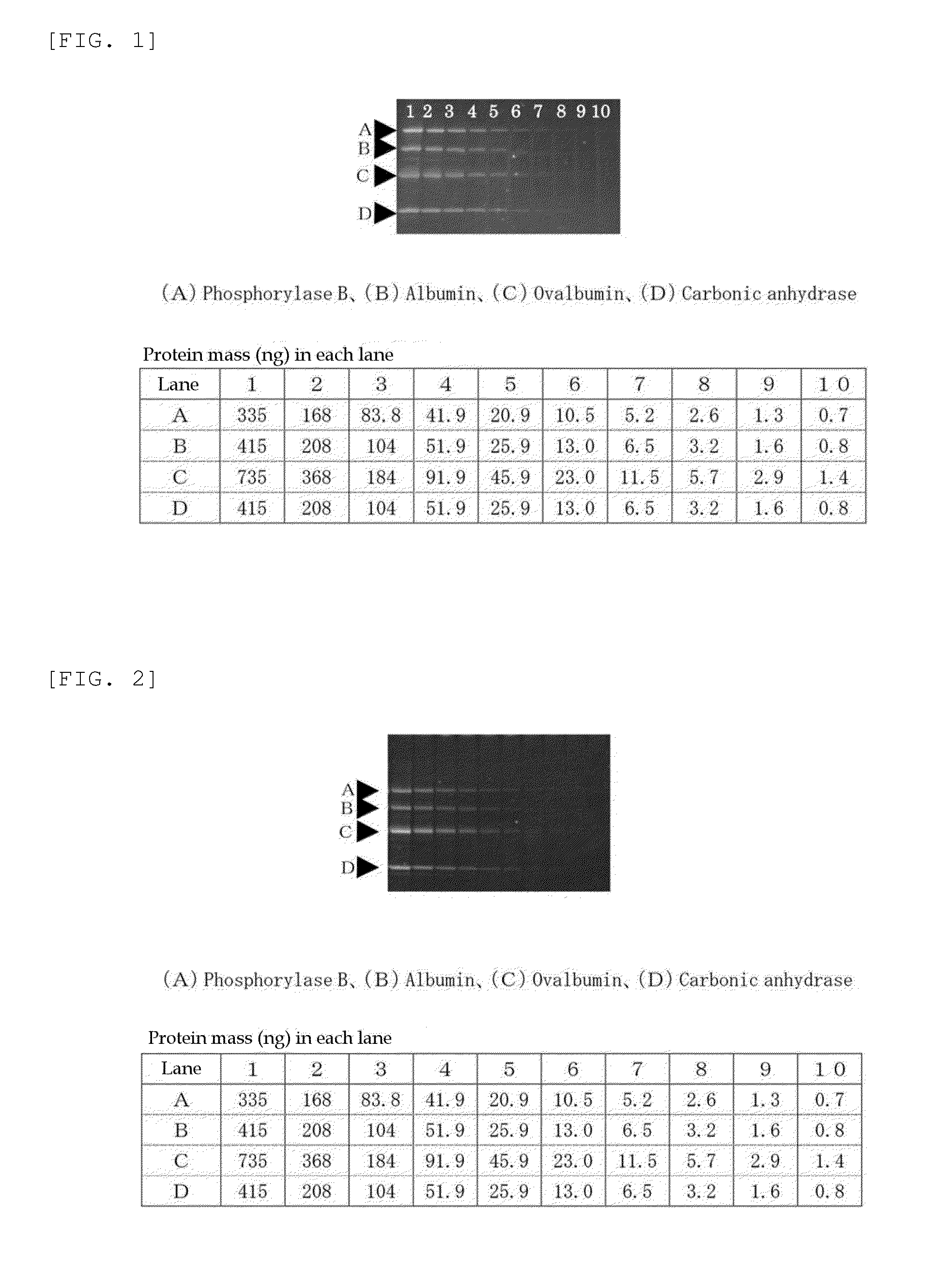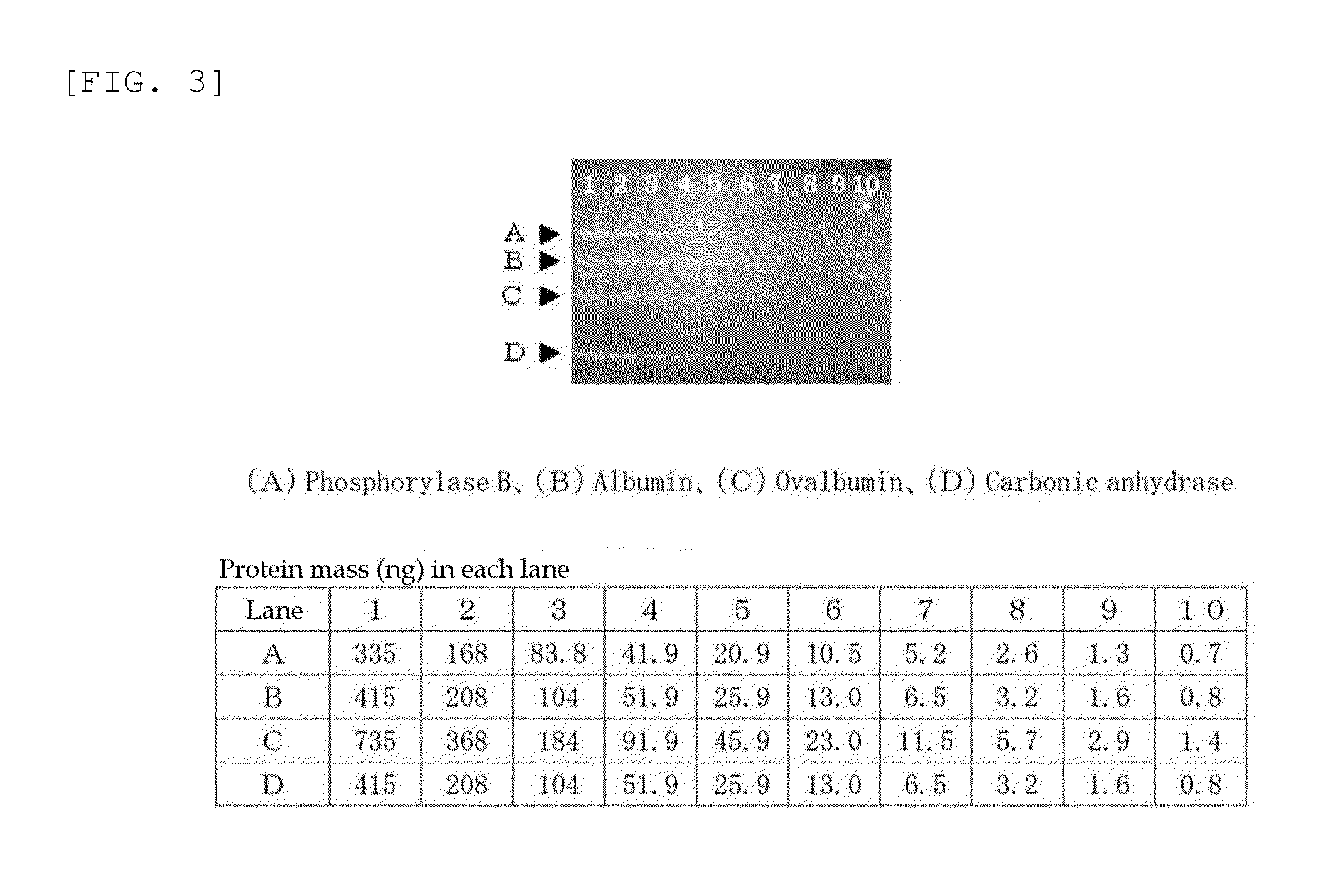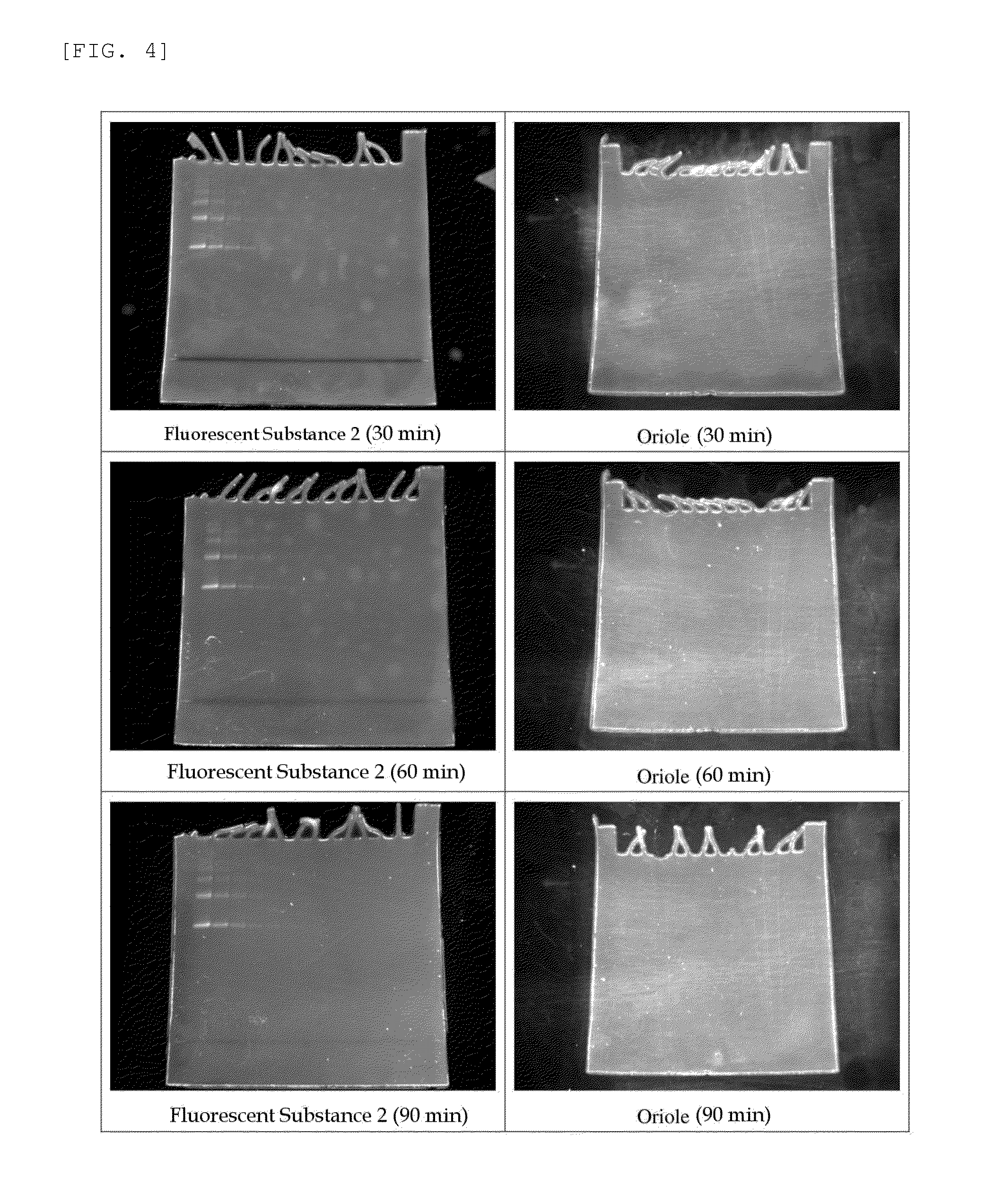Method for analysis of protein and analytical reagent
- Summary
- Abstract
- Description
- Claims
- Application Information
AI Technical Summary
Benefits of technology
Problems solved by technology
Method used
Image
Examples
example 1
Method for the synthesis of Fluorescent Substance 1 (Ia)
[0055]
[0056]A 100 mL 3-necked flask was charged with 5.0 g (25.3 mmol) of 2,2′-dipicolylamine, 1.2 g (40.4 mmol) of paraformaldehyde, and 72 mL of water / i-PrOH (5:3 v / v), and the pH was adjusted to 8 by adding 1 N HCl. After heating at 80° C. for 30 min., 3.0 g (10.1 mmol) of 4-hydroxybenzaldehyde was added thereto, and the mixture was refluxed for 12 hours. The solvent was removed by distillation under reduced pressure, and the residue was then dissolved in ethyl acetate and washed with a saturated sodium bicarbonate aqueous solution. It was dried with Na2SO4, the solvent was then removed by distillation under reduced pressure, and the residue was purified by column chromatography (Al2O3, CH2Cl2:MeOH=300:10 v / v), thus giving a synthetic intermediate.
[0057]Furthermore, a 100 mL pear-shaped flask was charged with 0.5 g (0.9 mmol) of 3,5-bis((bis(pyridin-2-ylmethyl)amino)methyl)-4-hydroxylbenzaldehyde, 0.15 g (0.9 mmol) of 4-(dic...
example 2
Method for the Synthesis of Fluorescent Substance 2 (Ib)
[0059]
[0060]A 300 mL 3-necked flask was charged with 5.03 g (25.3 mmol) of 2,2′-dipicolylamine, 1.21 g (40.4 mmol) of paraformaldehyde, 62.5 mL of water, 37.5 mL of i-PrOH, and 2.0 mL of 2 N HCl, and it was heated at 80° C. for 30 min. 3.0 g (10.1 mmol) of Boc-L-tyrosine-OMe was added thereto, and the mixture was refluxed for 24 hours. The i-PrOH was removed by distillation under reduced pressure, the residue was then cooled to 0° C., and an oil-like substance that was deposited was collected by separation. It was dissolved in ethyl acetate, then washed in turn with a saturated sodium bicarbonate aqueous solution and saturated brine, and dried with anhydrous sodium sulfate. The solvent was removed by distillation under reduced pressure, and the residue was then purified by column chromatography (Al2O3, chloroform:methanol=10:1 v / v), thus giving a brown oil-like compound.
[0061]Furthermore, a 50 mL 3-necked flask was charged with...
example 3
Method for the Synthesis of Fluorescent Substance 3 (Ic)
[0063]
[0064]A 500 mL 3-necked flask was charged with 1.95 g (31.5 mmol) of Compound 1, 3.18 g (31.5 mmol) of triethylamine, and 150 mL of THF and placed in an ice bath. 5.43 g (20.1 mmol) of Compound 2 was dissolved in 50 mL of THF and added thereto using a dropping funnel over 1 hour. The mixture was stirred in an ice bath for 30 min., the temperature was then returned to room temperature, and stirring was carried out for 12 hours. The reaction was stopped by the addition of water, and the solvent was then removed by distillation under reduced pressure. The residue was dissolved in ethyl acetate, then washed with saturated brine, and dried with anhydrous sodium sulfate. The solvent was removed by distillation under reduced pressure, and the residue was then purified by column chromatography (SiO2, CHCl3:MeOH=10:1 v / v→acetone:triethylamine=200:5 v / v), thus giving a synthetic intermediate.
[0065]Furthermore, a 300 mL 3-necked fla...
PUM
 Login to View More
Login to View More Abstract
Description
Claims
Application Information
 Login to View More
Login to View More - R&D
- Intellectual Property
- Life Sciences
- Materials
- Tech Scout
- Unparalleled Data Quality
- Higher Quality Content
- 60% Fewer Hallucinations
Browse by: Latest US Patents, China's latest patents, Technical Efficacy Thesaurus, Application Domain, Technology Topic, Popular Technical Reports.
© 2025 PatSnap. All rights reserved.Legal|Privacy policy|Modern Slavery Act Transparency Statement|Sitemap|About US| Contact US: help@patsnap.com



